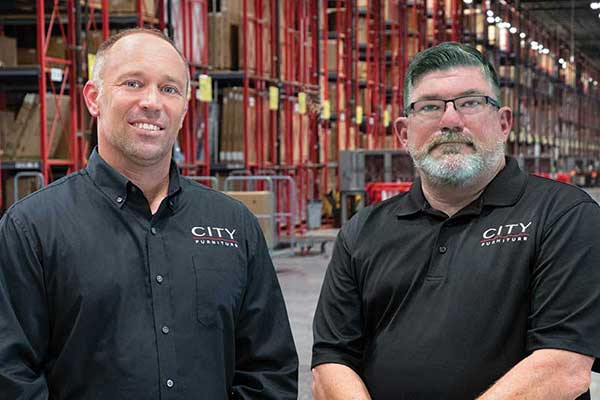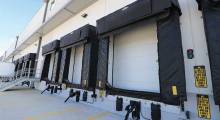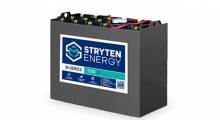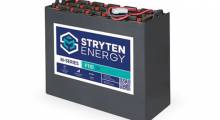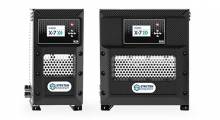Multiple motive power technologies are vying for the attention of lift truck fleet operators today, including lithium-ion (Li-ion) batteries and charging systems, hydrogen fuel cells and thin plate pure lead (TPPL) systems. Each has its own strengths, and there are plenty of technical details to learn about—factors like energy density or fast charging characteristics—as part of making a choice for how to power electric lift truck fleets that in the past were typically powered by flooded, lead-acid batteries.
Lithium, it turns out, is growing most rapidly among motive power choices. A lot of factors can be involved, like energy density of the battery materials or how green is the underlying grid. For more users, however, motive power choice boils down to two key outcomes: a more highly productive fleet, and less time and cost spent on motive power maintenance.
In short, the motive power search usually hinges on tangible gains. For City Furniture, its transition from lead-acid to lithium power for its lift truck fleet began in 2018, and the outcomes included a 12% gain in fleet productivity and gaining back 500,000 cubic feet of storage at its Tamarac, Fla., DC. The latter gain directly tied to opportunity charging doing away with the need for part of the DC’s interior to be devoted to lead-acid battery storage room and maintenance.
With Li-ion batteries and opportunity charging, says Shaun Feraco, senior vice president of operations for City Furniture, the fleet of 134 lift trucks only needs one battery per truck, which can be charged on breaks to keep them running at full performance for an entire shift.
Before, when the three-shift operation ran on lead-acid batteries, it needed three batteries per truck, with one in the truck, one being charged, and one in a cool-down cycle to be ready to swap into a truck.
City Furniture uses orderpickers and tow tractors from Crown Equipment Corp., with most of the fleet being orderpickers that suit its workflows for handling, storing and picking furniture and products like rolled up rugs.
“The main productivity gain comes from the fact that we don’t have to stop and do battery swaps anymore because we get reliable performance by opportunity charging. During any of our breaks, throughout all our processes and shifts, our operators are able to recharge the units to almost full capacity. That has eliminated the need to do swapping and reduced downtime associated with powering the machines. The other key factor with lithium that helps our productivity is that the machines can operate at full speed all the time.” -Feraco.
With lead-acid batteries, says Feraco, a battery’s available power tends to degrade over time, such that during a shift, truck performance might drop a bit, which is noticed by operators as slower horizontal travel speed or slower lift and lower speeds. While a swap could restore full performance, either way—a swap or degraded truck performance—hinders high fleet productivity and truck utilization.
Feraco:
“With lead-acid batteries, the performance starts to drop off over the life of the battery charge. With lithium-ion, we don’t see that performance fall off as long as it has some charge. It’s much like the lithium battery in your mobile phone, where as long as it has at least some charge left, the phone is going to work fine.”
The operators of the orderpickers and tuggers do have to remember to opportunity charge at breaks, says Feraco, but this transition has gone smoothly, aided by City Furniture’s long-held following of lean management principles, including visual controls and clear instructions for using and maintaining new systems.
“Any time we introduce something new to our operations, we make sure we have a really well thought out rollout plan with signage, with training and visuals to support the new practices,” says Feraco.
Space savings, maintenance simplicity
Lead-acid battery swapping, storage and maintenance eat up space and staff time. David Clevenger, senior vice president of fleet and DC maintenance for City Furniture, explains that in the days when the fleet ran on lead-acid batteries, a large battery storage area had to be maintained and staffed.
It needed safety-related wash stations and a large battery changing system with a lift and roller mechanism to extract, handle and insert the batteries.
“By converting to lithium ion, with one battery per truck that stays in the truck, that frees up considerable space in our DC,” says Clevenger. “We racked out that area, adding valuable storage and operational space.”
Savings can also be tied to maintenance labor, since no swap procedures are needed, unless a battery were to fail. The Li-ion batteries are all sealed units that don’t need watering and aren’t going to spill acid fluid, so those hazards and time cleaning up little spills and keeping the battery room spotless have gone away.
“Maintenance-wise the switch has been tremendous, because now we get constant power through one battery that stays in the truck. With lead acid, we’d have acid cell overflows sometimes and acid-corrosion issues to prevent, so it consumed a lot of maintenance time to keep the units clean, and also clean the rollers and keep the battery changing equipment clean.” - Clevenger
City Furniture began its lithium transition using a battery brand from a third party, but soon realized system integration and support were lacking. As a long-term user of Crown’s trucks, it tested and decided to phase in Crown’s V-Force Integrated Lithium-Ion Storage System. The system includes one lithium-ion battery per lift truck supported by V-Force high-frequency chargers.
The transition to V-Force batteries and chargers is mostly complete, with the charging out-performing the legacy chargers on fast charging for the fleet. Direct integration with the truck means the truck’s display shows battery status rather than needing a separate display module.
At the same time City Furniture was transitioning to V-Force chargers and batteries for its fleet, it was also deploying Crown’s InfoLink fleet management system, which provides operational data to make better decisions to help improve safety and productivity, while managing safety checklists and who is certified to operate the trucks. Feraco says accurate telematics data on impacts and safety incidents helps the operation manage its safety program.
The InfoLink dashboard also shows trends on actual use of each truck and how it’s being used to help assess equipment needs across workflows and sites within City Furniture’s operations. “It helps us determine how many pieces of equipment and types of equipment we need based on how our equipment is actually being used, so it has helped us tremendously when it comes fleet management,” says Clevenger.
Meanwhile, because the Li-ion batteries under opportunity charging are delivering steady power, operators no longer have a reason to want to grab a “favorite” machine in hopes it would have a battery that didn’t slow the truck toward the end of the shift. “It’s really eliminated the need to do any of that, because within each key workflow, the machines perform equal,” Feraco says. “We know they are operating at the same consistent level no matter what.”
Lithium’s got competition
Benefits like lower maintenance costs that include space savings with no swaps combined with high fleet uptime and productivity, are the two areas of benefit driving rapid adoption. Sure, Li-ion is energy dense and fast charging, but the outcomes are what matter, and most operations are after high productivity and less maintenance cost.
The projected adoption rate for lithium is impressive. According to market research firm Interact Analysis, in 2023, lithium batteries powered about 35% of all electric lift trucks worldwide, but by 2030, this share will leap up to near 80% of all electric industrial trucks.
Rapid gains are expected for lithium among Class III vehicles, but with 48-volt and 72-volt batteries, lithium trucks can handle a range of applications beyond light duty Class III. Lithium, of course, has competition, including from traditional lead acid batteries, which still holds a big chunk of the electric lift truck market because it offers reliable performance and relatively low total cost of ownership.
Another motive power choice for electric lift trucks are hydrogen fuel cells. These fuel cells drop into electric lift trucks, and while they don’t need charging, they do require specialized hydrogen refueling and storage infrastructure.
Even so, fuel cells have gained use in cold storage operations and in some large DCs with 24/7 fleet operations. Plug Power, a fuel cell solution provider, last year devised a turnkey solution with a simplified fuel storage infrastructure, aimed at driving more fuel cell use for fleets with 100 or fewer trucks.
Thin plate pure lead (TPPL) batteries are another motive power choice growing in popularity. Like lithium, TPPL batteries are meant to be opportunity charged and can be used to achieve the goal of having one battery per truck, relying on rigorous opportunity charging on breaks to keep a fleet powered without battery swaps. TPPL batteries generally don’t have as many duty cycles as lithium, but they are similar in that you can opportunity charge and avoid the need for a large battery room.
Internal combustion (IC) lift trucks including liquefied petroleum gas (LPG) and diesel remain other motive power options, though in California, the California Air Resources Board (CARB) plans to ban sales of all non zero-emission new forklifts by 2026.
In California, exemptions to the proposed rule include rough terrain forklifts and focuses on units with under a 12,000-pound lift capacity. The proposal went through some additional workshops and refinements this year, so it’s best to check with CARB or a dealer for the latest on the CARB proposal’s phase-out plans.
According to Jim Bunsey, director of commercial business development at the industry group the Propane Education Research Council (PERC), CARB has recently announced an updated agenda for the zero-emission forklift rule making. The drafted update details significant changes from the March 2023 proposal, including the phasing out of all Class 4 ICE forklifts, additional requirements for Class 5 lifts and fleet size restrictions.
While the lower emissions goals of the CARB proposal are understandable, Bunsey points out that any type of electric truck, even if emissions free on site, draws power from the grid that may use fossil fuel.
Jim Bunsey:
“While the proposed ban may seem like an effective way to reduce emissions, it’s important to remember no forklifts or engines are truly emissions-free. Electric options still draw power from the electric grid, which in many states still burn coal and other fossil fuels. To fully achieve a lower carbon future, it will take a mix of clean energy sources like solar, wind, propane and grid electricity.”
Bunsey notes that renewable propane has become more accessible in many markets, including the materials handling industry. Renewable propane is made primarily from plant and vegetable oils, animal fats or used cooking oil. “It offers the same great features as conventional propane—reliability, portability and power—with the added benefit that it introduces no new carbon into the environment,” he adds.
TPPL achieves aims
As part of a revamp of its DC network, Hamilton Beach Brands transitioned to opportunity charging and TPPL batteries when it moved into a new 1-million-square-foot, omni-channel DC near Memphis back in 2019.
That new DC in Byhalia, Miss., superseded an older DC a bit closer to Memphis that had previously used a fleet of lift trucks powered by liquefied petroleum gas (LPG). Goals for the new facility included greater storage density and more efficient pallet movements, along with a significantly expanded and upgraded direct-to-consumer (DTC) fulfillment system.
As part of that transition to this new regional hub DC, Hamilton Beach’s objectives included outfitting the operation with new reach trucks well-suited to narrow aisle work, along with orderpickers and other trucks. To meet these needs, it turned to its long-time lift truck supplier Yale Lift Truck Technologies.
In terms of motive power options, Hamilton Beach wanted to avoid building and staffing a large battery storage and maintenance area, and it wanted the cleanliness of electric trucks to avoid issues like soot buildup on products, so that tilted the power choice to either TPPL or lithium batteries.
As a long-time user of Yale’s trucks, Hamilton Beach consulted with Yale, which did a power study of the old fleet, and assessed those patterns against the needs and requirements of the new DC.
At the time of the study, lithium batteries were newer to the market, and a bit costlier than today, so that study identified TPPL as a good option because TPPL is meant to be opportunity charged, and it came at a lower upfront price point. The power study for Hamilton Beach showed a solid ROI on TPPL. What’s more, just like lithium batteries, TPPL batteries are fully sealed units that don’t need watering.
According to Mike Bunge, vice president of global supply chain and operations for Hamilton Beach Brands, the new fleet’s use of TPPL is meeting core objectives, namely high fleet productivity with no battery swapping and the space benefits that entails, and clean electric power to avoid issues with particulate build up on products.
Mike Bunge:
“It was an opportunity to upgrade the fleet overall to units better suited to narrow aisle layout and the workflows we have, where now we have a fleet that meets our needs perfectly. The way we’ve got the facility set up, it’s very convenient for opportunity charging. We’ve got charging stations set up next to the break areas, and when an operator pulls up to take a break, it’s easy to plug into the charger, and go inside and take lunch or a break.”
Today the fleet numbers just more than 50 trucks, including 33 narrow-aisle, stand-up reach trucks, five orderpickers, 12 low level orderpickers and one center-rider truck. Bunge says compact, side-stance reach trucks help with operator comfort and safety because of the easier mount and dismount, and clearer forward visibility for reduced twisting and neck craning to see tasks. The opportunity charging during breaks keeps the trucks going full bore, even when the operation is running three shifts, 24/7.
Bunge:
“I don’t consider ourselves to be a light or medium-duty operation. These trucks are normally operating 20 plus hours a day, using opportunity charging. We say on the team about the importance of opportunity charging, about the importance of plugging them in during breaks, but we’ve been able to keep the fleet moving productively, even at peak seasons.”
Internal combustion trucks were never in the equation at the new DC in Byhalia, as it does a considerable amount of omni-channel and DTC fulfillment, so the operational goals included an electric fleet to reduce the need to periodically dust off product packages and to keep operations clean and quiet.
Overall, Bunge explains that the new DC in Byhalia was an ambitious project for Hamilton Beach that went far beyond the lift truck fleet, with other investments like narrow aisle racking, orbital pallet wrapping equipment, and a new warehouse management system (WMS) from Körber Business Area Supply Chain as well as conveyor and picking methodologies for DTC fulfillment. Part of the DC design is a DTC processing area supported by powered conveyor with needed SKUs fed from an adjacent area of dynamic racking that holds products stored on push back rollers.
To top things off, the fleet is outfitted with the Yale Vision telematics and fleet software solution to handle functions like safety check lists and the safety reporting and management process.
The DC project is continuing to evolve including using more advanced functions in the WMS software, says Bunge, but the new trucks and TPPL batteries and chargers are quietly doing their job as expected, with no hiccups on uptime, good reports on the ergonomics of the new trucks, and little maintenance on the batteries.
“We’re pleased with the equipment and the fleet we have in place,” says Bunge, “and in terms of maintenance, it’s very little hassle.”
Article topics
Learn More
